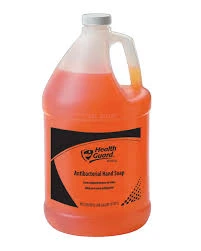Exploring the Applications and Benefits of Polymaleic Anhydride in Modern Chemistry
Exploring Polymaleic Anhydride Structure, Properties, and Applications
Polymaleic anhydride (PMA) is a versatile polymer known for its distinctive chemical structure and wide range of applications across various industries. As a derivative of maleic anhydride, PMA features alternating units of maleic anhydride, which confer unique properties that make it an attractive choice for many formulations, particularly in coatings, adhesives, and water treatment products.
Structure and Properties
The fundamental structure of polymaleic anhydride is characterized by its repeating units of maleic anhydride. This structure is key to its functionality. The presence of an unsaturated double bond and an anhydride functionality allows PMA to readily participate in chemical reactions, which can be exploited to modify the polymer for specific applications.
One of the critical properties of PMA is its ability to form copolymers with other monomers. By reacting with various materials, PMA can be tailored to exhibit enhanced properties such as increased solubility, improved thermal stability, or altered adhesion characteristics. This versatility makes PMA a commonly used additive in various formulations, strengthening the performance of products in which it is incorporated.
Additionally, PMA possesses inherent tensile strength and flexibility, which can be augmented through the addition of plasticizers or other modifying agents. This enables PMA to serve not only as a binder in coatings but also as a component that enhances the mechanical properties of polymers in plastic and rubber applications.
Industrial Applications
The unique attributes of polymaleic anhydride lend themselves to a multitude of industrial applications. In the realm of coatings, PMA is utilized for its excellent film-forming capabilities. It can be combined with various resins to provide protective barriers against environmental factors, thus increasing the durability and longevity of painted surfaces. The incorporation of PMA into coating formulations is particularly beneficial in automotive and industrial coatings, where resistance to chemicals and abrasion is crucial.
polymaleic anhydride

In the adhesives sector, PMA serves as a crucial additive that influences the bonding strength and longevity of adhesive products. By enhancing the adhesion properties of adhesives, PMA contributes significantly to the performance of products such as sealants and construction adhesives, ensuring they can withstand both static and dynamic stresses.
Another area of significant application for PMA is in water treatment processes. The polymer’s ability to chelate and sequester metal ions makes it highly effective in preventing scale formation and fouling in water systems. This property is utilized in various sectors, including oil and gas, where PMA can help maintain the efficiency of cooling systems and improve water quality.
Environmental Considerations
As industries increasingly focus on sustainability, PMA has gained attention for its potential environmentally friendly applications. Studies have shown that PMA can be produced from renewable resources and can be biodegradable, making it a suitable candidate for formulations that aim to minimize ecological impact.
Moreover, its role in improving efficiency in industrial processes contributes to reduced waste and energy use, aligning with global efforts to achieve greener manufacturing practices.
Conclusion
In summary, polymaleic anhydride is a multifaceted polymer that serves a vital role in various industries due to its unique chemical properties and adaptability. From enhancing the performance of paints and coatings to improving the effectiveness of water treatment processes, PMA stands out as a valuable material. As research continues to explore new applications and sustainable production methods, the future of polymaleic anhydride looks promising, with the potential to contribute significantly to advancements in material science and environmental stewardship.
-
Water Treatment with Flocculant Water TreatmentNewsJun.12,2025
-
Polymaleic AnhydrideNewsJun.12,2025
-
Polyaspartic AcidNewsJun.12,2025
-
Enhance Industrial Processes with IsothiazolinonesNewsJun.12,2025
-
Enhance Industrial Processes with PBTCA SolutionsNewsJun.12,2025
-
Dodecyldimethylbenzylammonium Chloride SolutionsNewsJun.12,2025





